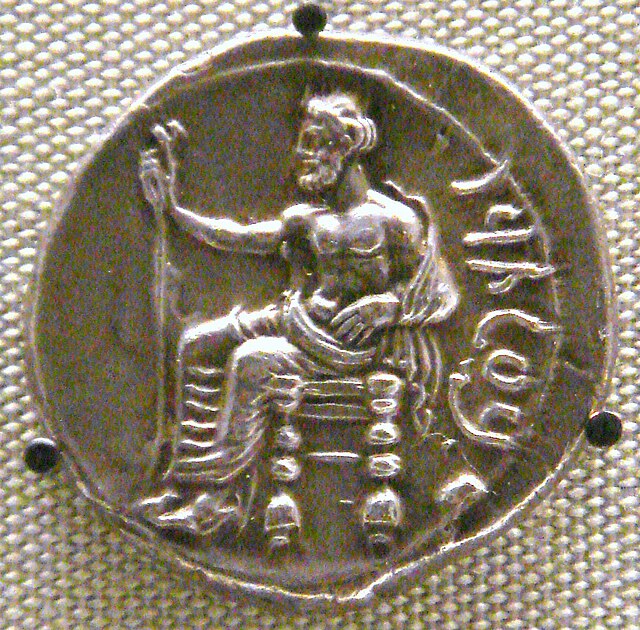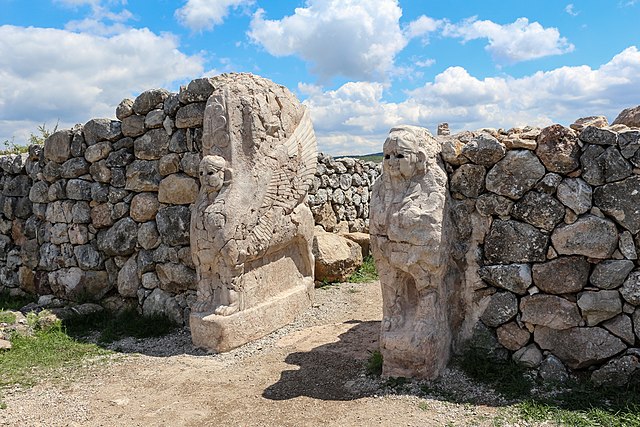Cilicia was a geographical region in southern Anatolia, extending inland from the northeastern coasts of the Mediterranean Sea. Cilicia has a population ranging over six million, concentrated mostly at the Cilicia plain. The region includes the provinces of Mersin, Adana, Osmaniye and Hatay.
Probable captives from Cilicia, on the Nasiriyah stele of Naram-Sin, circa 2200 BC.
Fugitive slave treaty between Idrimi of Alalakh (now Tell Atchana) and Pillia of Kizzuwatna (now Cilicia), (c. 1480 BC) Ref:131447 .
The Persian Pharnabazus, pictured, as Satrap of Cilicia (379–374 BC). British Museum.
A Roman-period triumphal arch at Anazarbus, later converted into the city's south gate
Anatolia, also known as Asia Minor, is a large peninsula located in West Asia and a region of Turkey, constituting most of its contemporary territory. Geographically, the Anatolian region is bounded by the Mediterranean Sea to the south, the Aegean Sea to the west, the Turkish Straits to the north-west, and the Black Sea to the north. The eastern and southeastern boundary is either the southeastern and eastern borders of Turkey, or an imprecise line from the Gulf of Iskenderun to the Black Sea. Topographically, the Sea of Marmara connects the Black Sea with the Aegean Sea through the Bosporus strait and the Dardanelles strait, and separates Anatolia from Thrace in the Balkan peninsula of Southeastern Europe.
The henges in Göbekli Tepe were erected as far back as 9600 BC.
The Sphinx Gate in Hattusa
The Theatre at Halicarnassus (modern Bodrum) was built in the 4th century BC by Mausolus, the Persian satrap (governor) of Caria. The Mausoleum at Halicarnassus was one of the Seven Wonders of the Ancient World.
The Library of Celsus in Ephesus was built by the Romans in 114–117. The Temple of Artemis in Ephesus, built by king Croesus of Lydia in the 6th century BC, was one of the Seven Wonders of the Ancient World.








